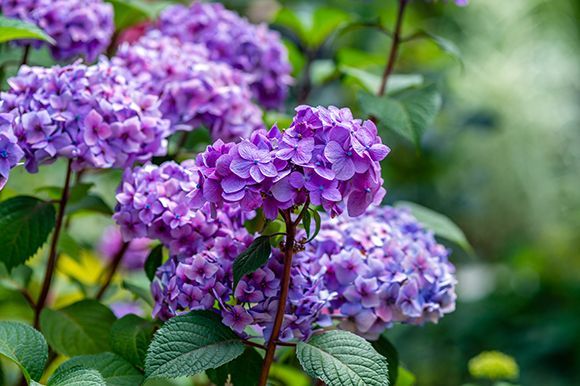How to Put Hydrangeas to Bed for the Winter
- Details
- Created: Wednesday, 07 November 2018 09:18

Autumn is upon us! The air is chilled and the leaves are starting to change colors and fall. It’s time to put the garden to bed, and this includes putting your beloved hydrangeas with their beautiful, abundant blooms to rest for the fall and winter months. It’s true: the time to tuck-in hydrangeas is upon us!
Where we live, there can be temperature swings all winter long. Many hydrangeas are considered hardy; however, all of the temperature changes can still wreak havoc on their health. They need some attention in order to survive the winter and come back bigger and better next year. It is true that hydrangeas grown in warmer climates don’t require as much post-season care as the plants grown in our zone. With that said, all hydrangeas would benefit from a little bit of extra care right now.
Keep watering.
You can continue to water your hydrangeas until the ground freezes. Hydrangeas are thirsty plants by nature, with their name basically meaning “hydration” in Latin. Cool, drying winter winds will definitely suck the moisture out of the plants, and watering is one vital way to care for hydrangeas this time of year.
Give them that last, hearty meal.
Add some compost to your beds in the fall months. Monrovia compares feeding your hydrangeas with compost to having a good night’s sleep - everyone feels better with a “good breakfast in their belly”. Hydrangeas will be hungry for a good compost after their long, winter nap. Compost can break down over the chilly months, making nutrients available in the spring. Nutrient-rich fertilizers are not needed – compost is ideal this time of year.
Mulch can be helpful, too.
When the days and nights are cold, mulching protects and insulates the crown and roots of the hydrangeas. Even in warmer zones it keeps moisture in and the weeds out. Even snow can act as a natural insulator for hydrangeas. Apply a layer of chunky mulch around the base of the plant and that will give your hydrangeas their best chance at success! Decorative mulch is helpful, but straw, marsh hay or even fallen leaves works the best.
Safe and cozy!
In our colder climate, you can even wrap or completely cover marginally hardy hydrangeas. This is more important for those that bloom on old wood, such as the mop head/big leaf hydrangea variety. Some of the newer varieties of mop head/big leaf hydrangeas bloom on both new and old wood. Generally, hardier hydrangeas (paniculata and arborescens types, for example) don’t need extra winter protection, but extreme cold can cause die-back of the branches. Are they predicting a colder than normal winter? Consider covering.
Have questions about your hydrangeas or other outdoor plants as winter approaches? Give us a call at Joe’s Market Basket or visit us at one of our many locations in Edwardsville, Godfrey, Troy, O’Fallon and now St. Peters, Missouri. You can also find us online at www.joesmarketbasket.com.



